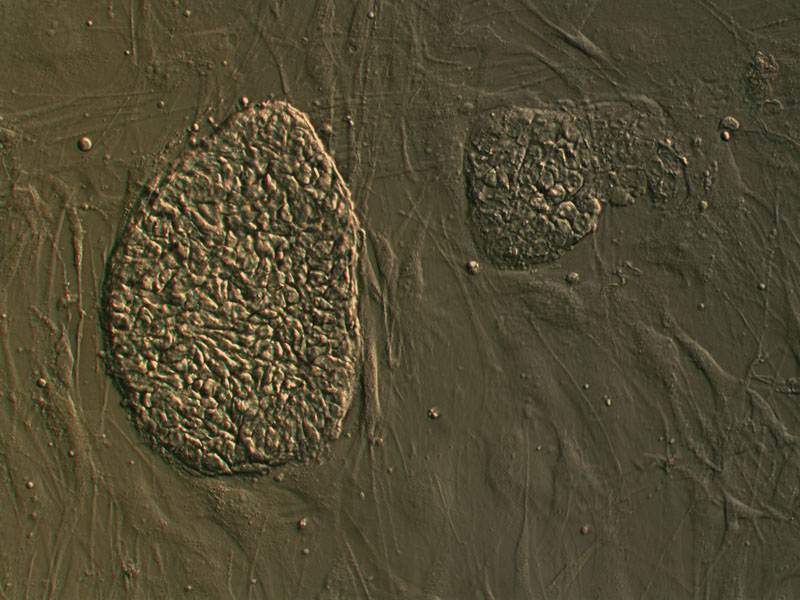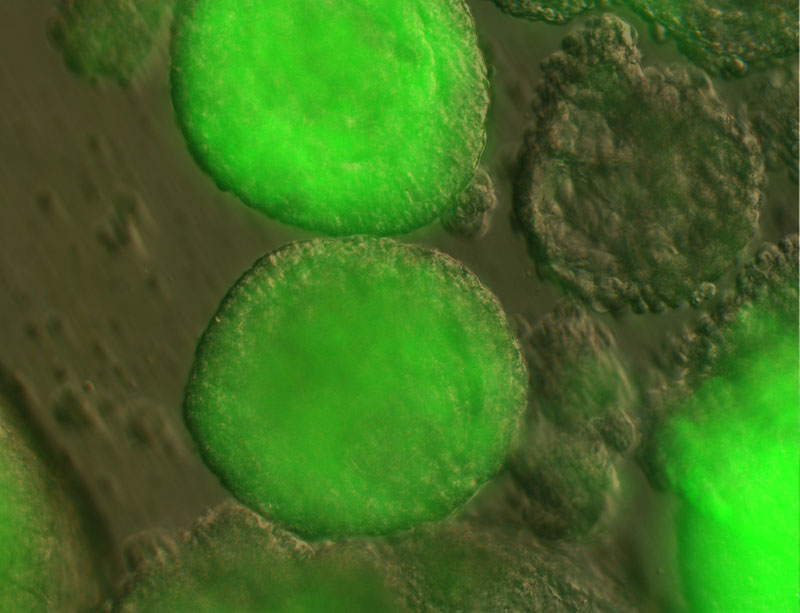Human Embryonic Stem Cells
Back to Stem cell solutions >>>
Human embryonic stem cells (hESCs) are pluripotent stem cells capable of differentiating into any cell type of the adult organism.
Our Focus:
hESCs are derived from the inner cell mass of the blastocyst stage human embryo. Since these cells are not yet committed specific cell lineages, they can be instructed to differentiate into any desired cell type of the adult body. Therefore, they hold great promise for the treatment of various degenerative diseases such as ischemic heart disease or Alzheimer's.
hESCs are cultured on a so-called "feeder layer" that supports their growth and helps maintain their undifferentiated state, which is reflected in the continued expression of "stemness" markers including Oct4 and SSEA4. The feeder layer typically consists of growth-inactivated mouse embryonic fibroblasts, but attempts are made to eliminate the need for any substance of animal origin.
When hESCs are detached from the feeder layer and prevented from adhering to the culture vessel surface, they form aggregates called embryoid bodies, within which cells start to differentiate towards diverse lineages. Most approaches to funneling cells towards a preferred lineage concentrate on this and subsequent stages.

Clumps of hESCs grow on mouse feeder fibroblasts

Embryoid bodies formed from GFP-expressing hESC under non-adherent conditions
Creative Cell Ltd. Puskás T. u. 13. 1119 Budapest, Hungary Phone: +36 (30) 41-44446, Fax: 36-1-372-4332

